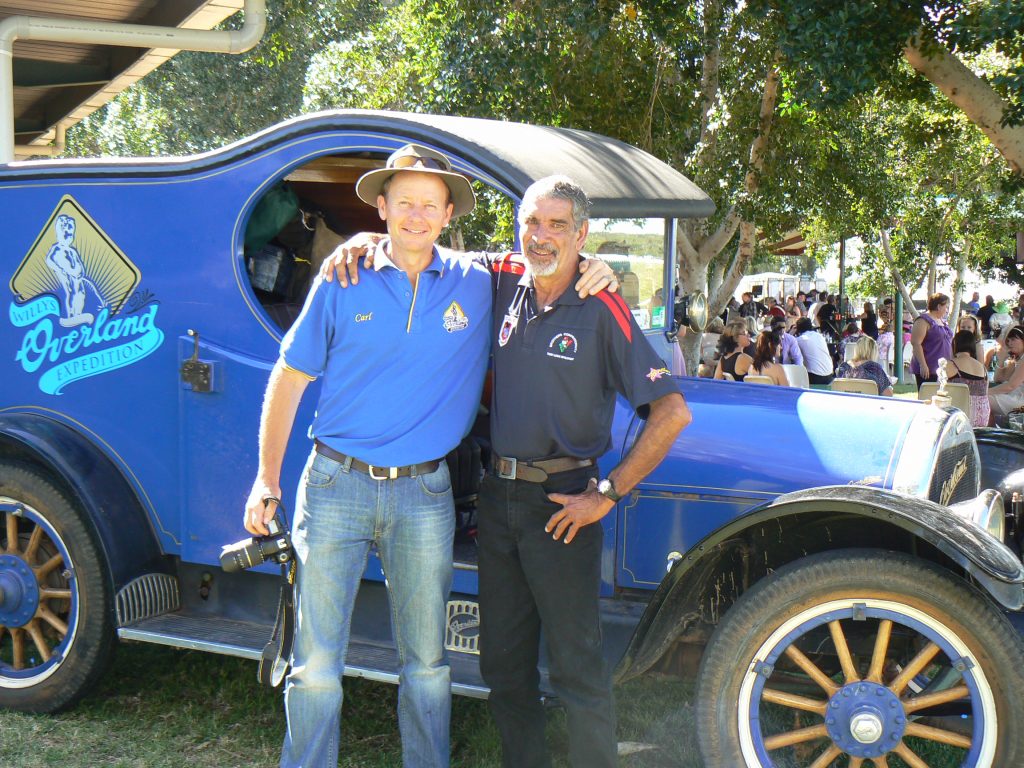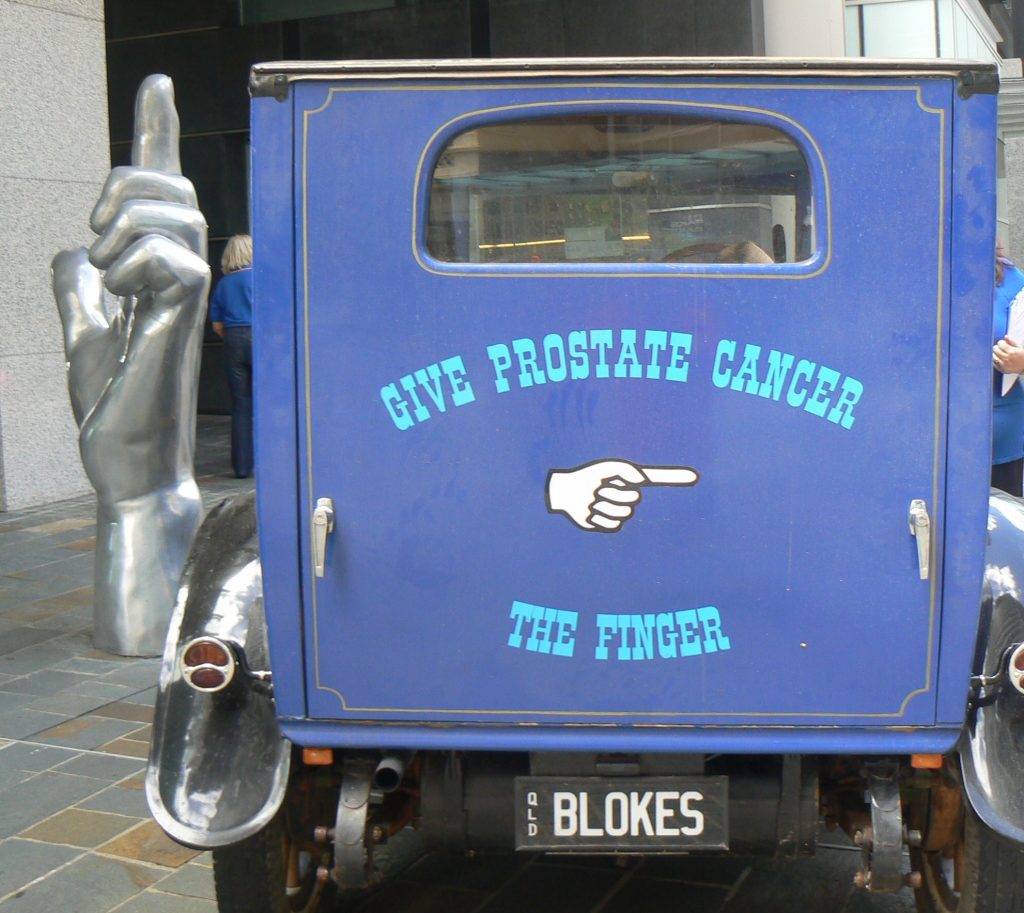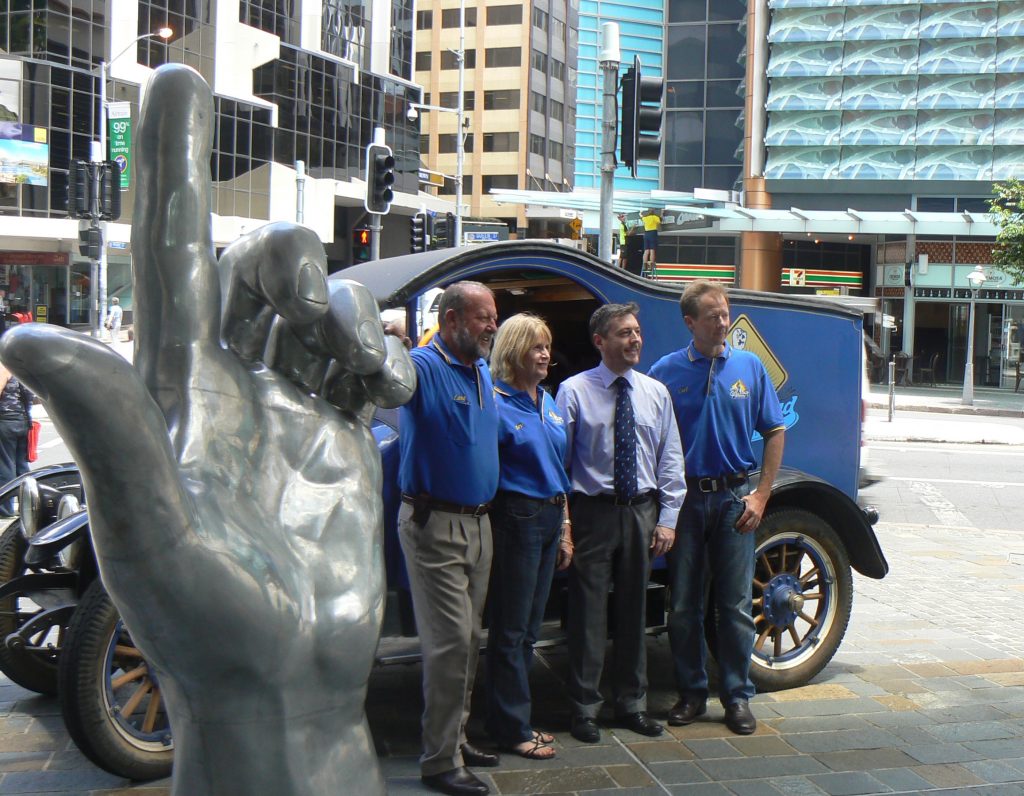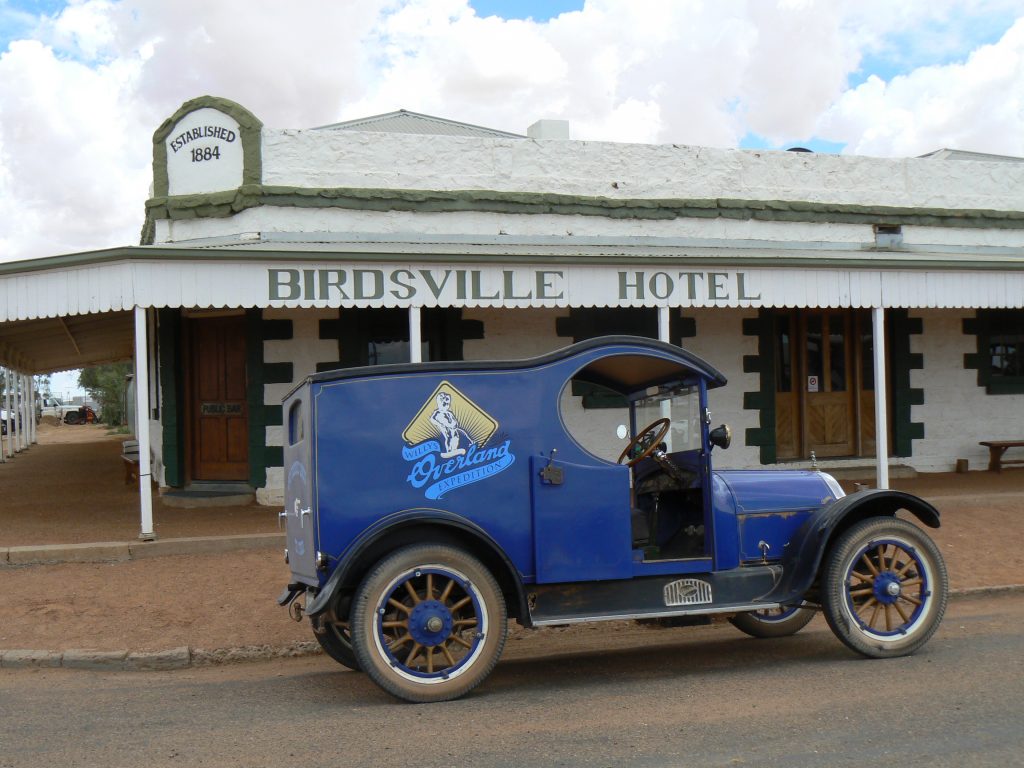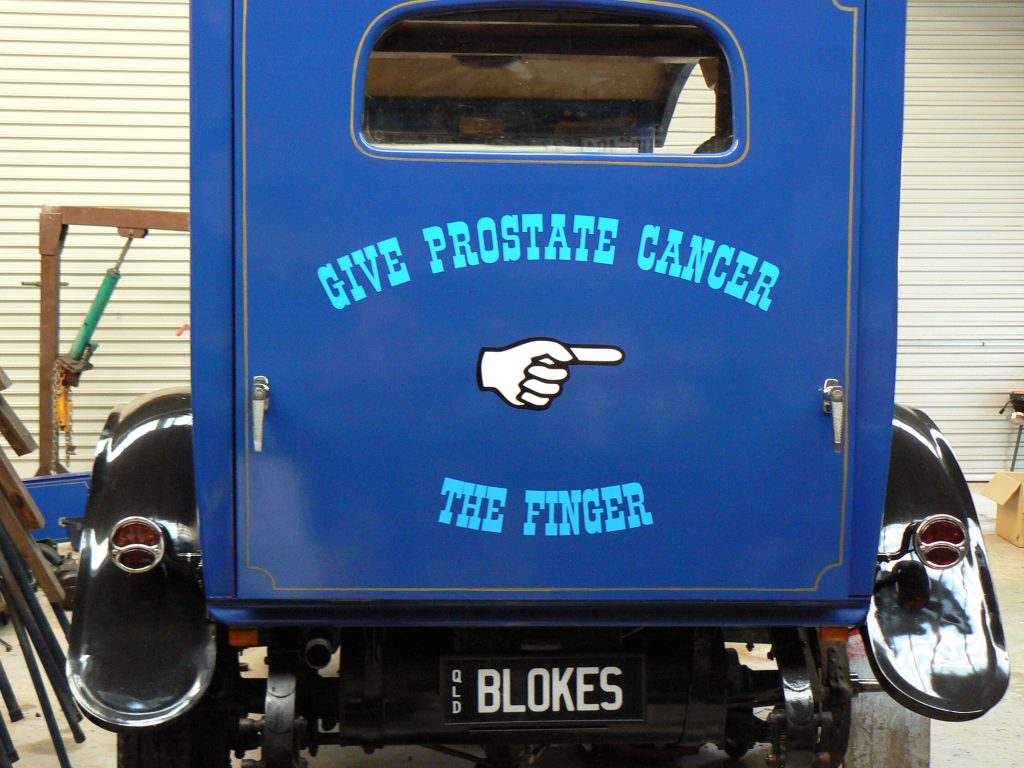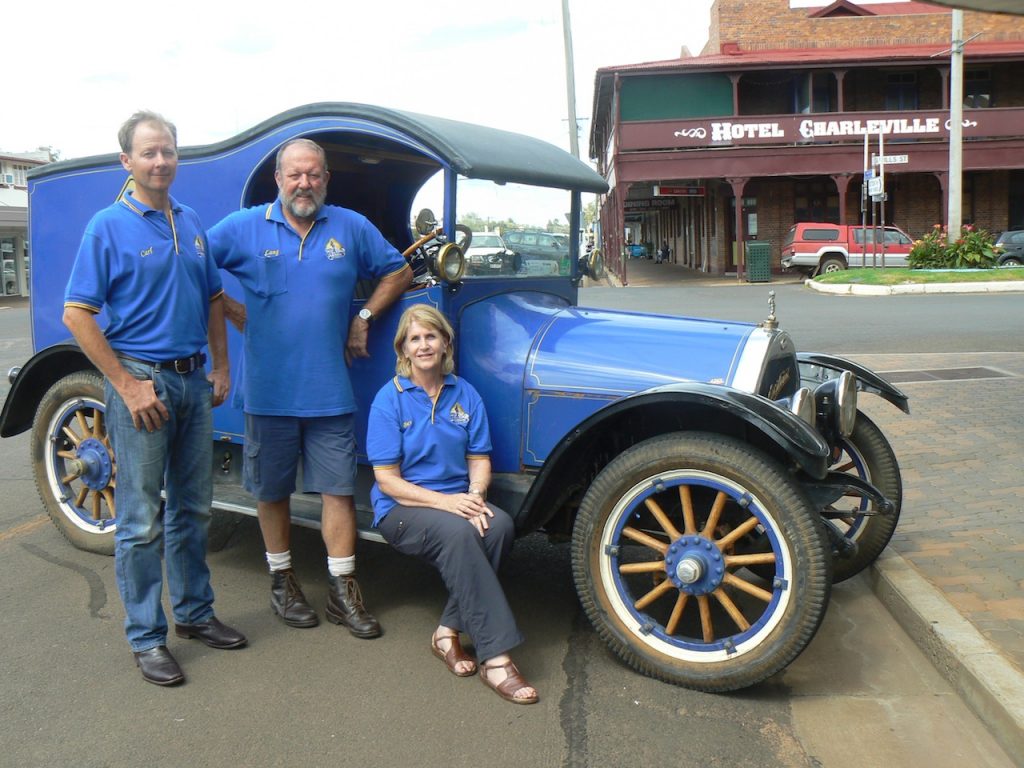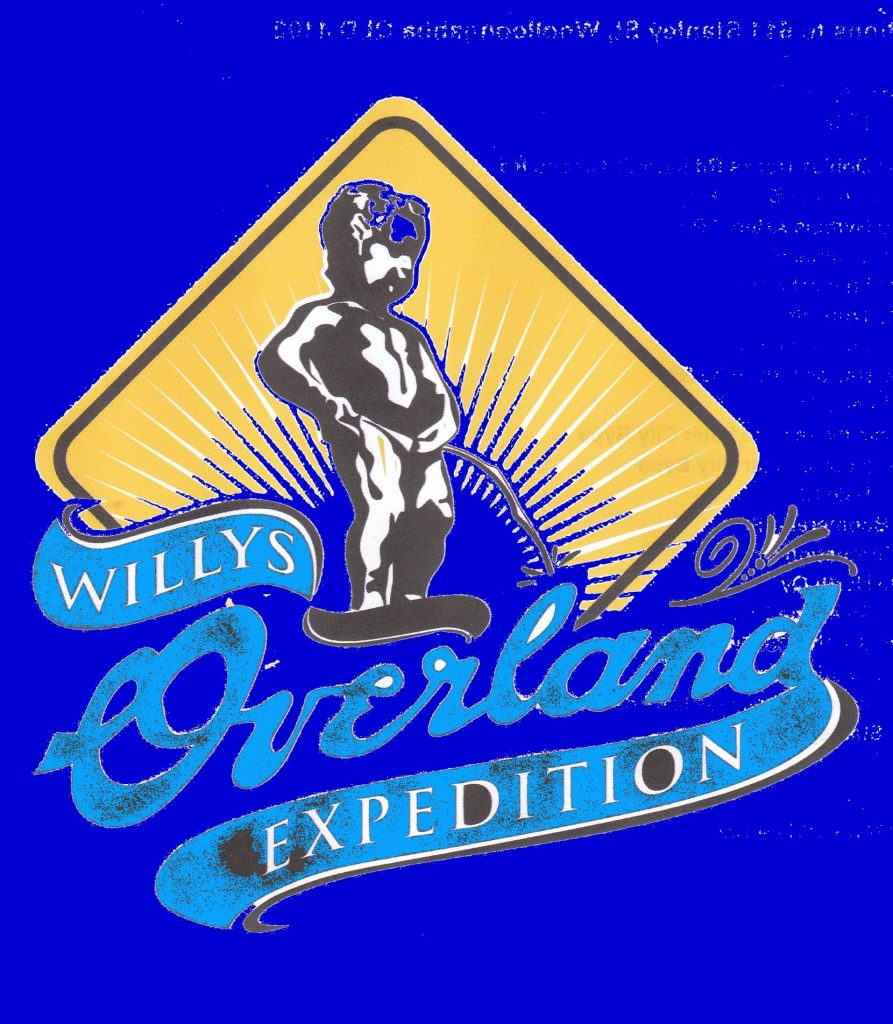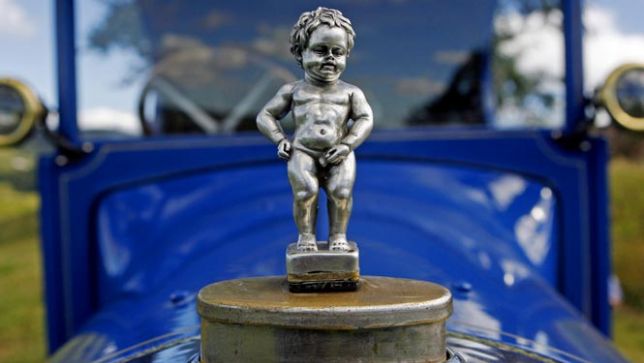1915 Willys Overland Expedition
In 2009 we heard 40 year old Carl Neilson talking at a car club meeting about his encounter with prostate cancer and his desire to pass the message to those as ignorant as he was about the disease (most men!). He later approached Lang and me for ideas about how to achieve this aim, and together we devised something interesting to rural men in particular realising their wives also had to be involved. A lecture tour in a modern vehicle would receive only limited response – we had to catch their attention immediately.
Having seen the huge interest in old vehicles during our various expeditions around the world, the 1915 Willys Overland sitting in our shed ready for restoration for the International Veteran rally in Tasmania in October 2010 shouted “Pick me!” We offered to create an around Queensland trip to bring the Overland, with Lang and Carl sharing the driving of the Overland and me in a support vehicle with a trailer if needed.
Carl leapt at the concept and, as he has restored many old cars himself, joined Lang in turning a “handyman’s delight project” into a beautiful veteran showpiece. Working full time, Lang and Car; finished the complete restoration, including building the entire body, in around three months.
The Cancer Council along with the Prostate Cancer foundation were very enthusiastic about our trip and we were provided with some funding through Queensland Health. Lang and Carl were even invited to attend a week long course run through the Cancer Council for oncology nurses to increase their knowledge.
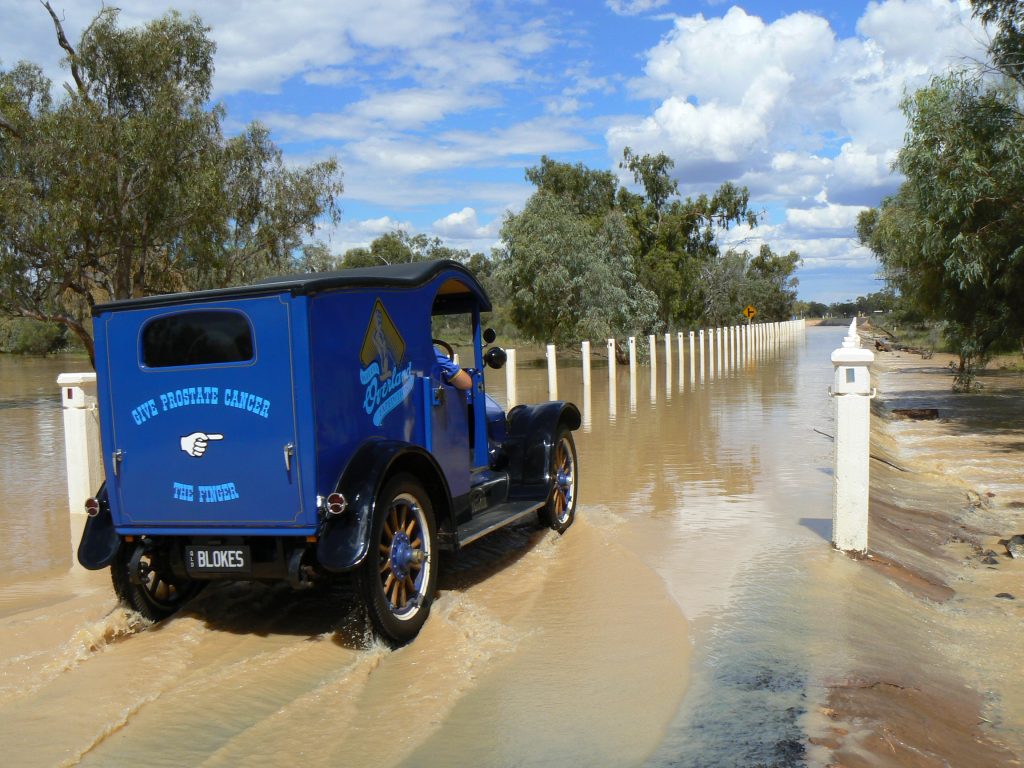


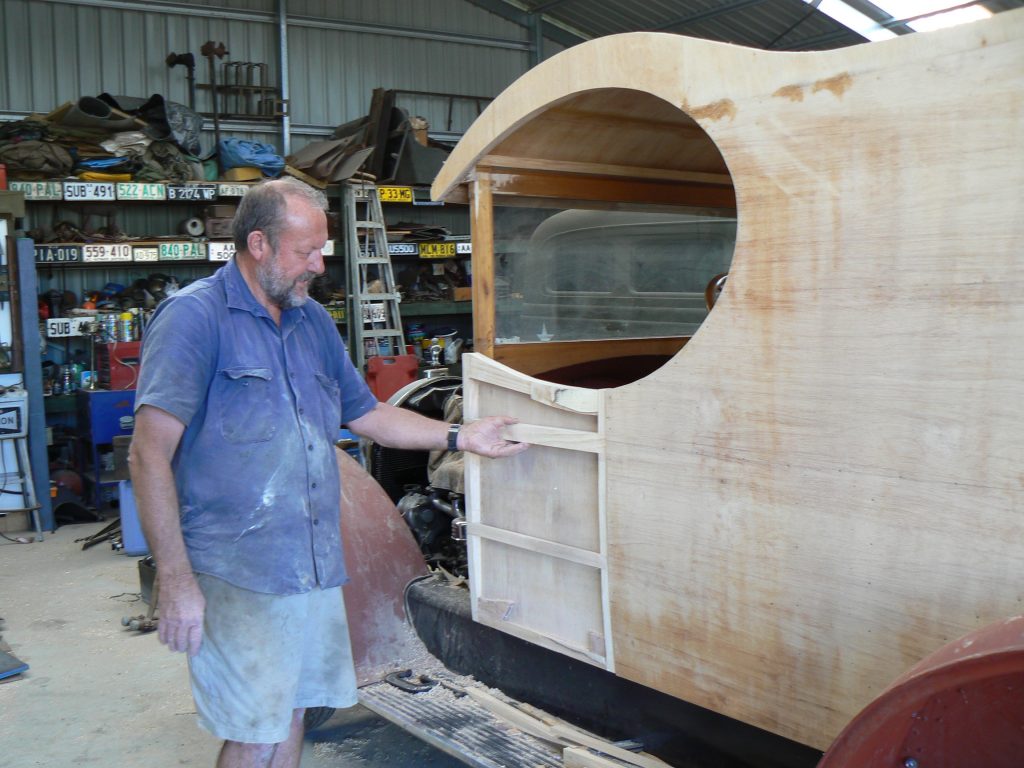

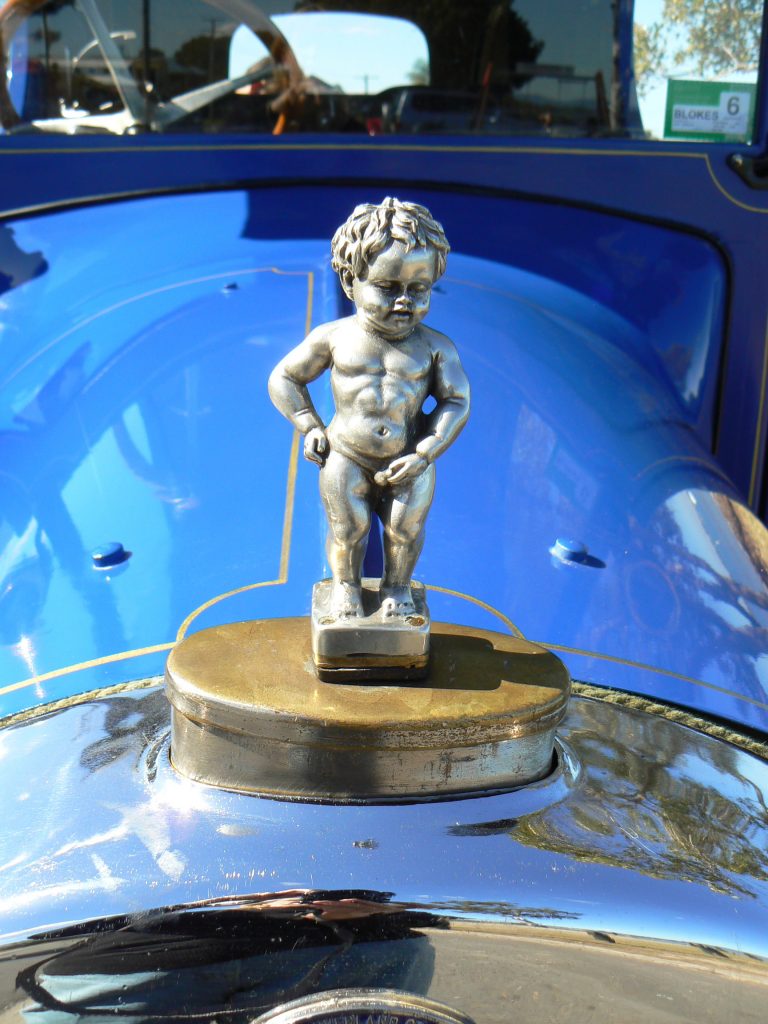
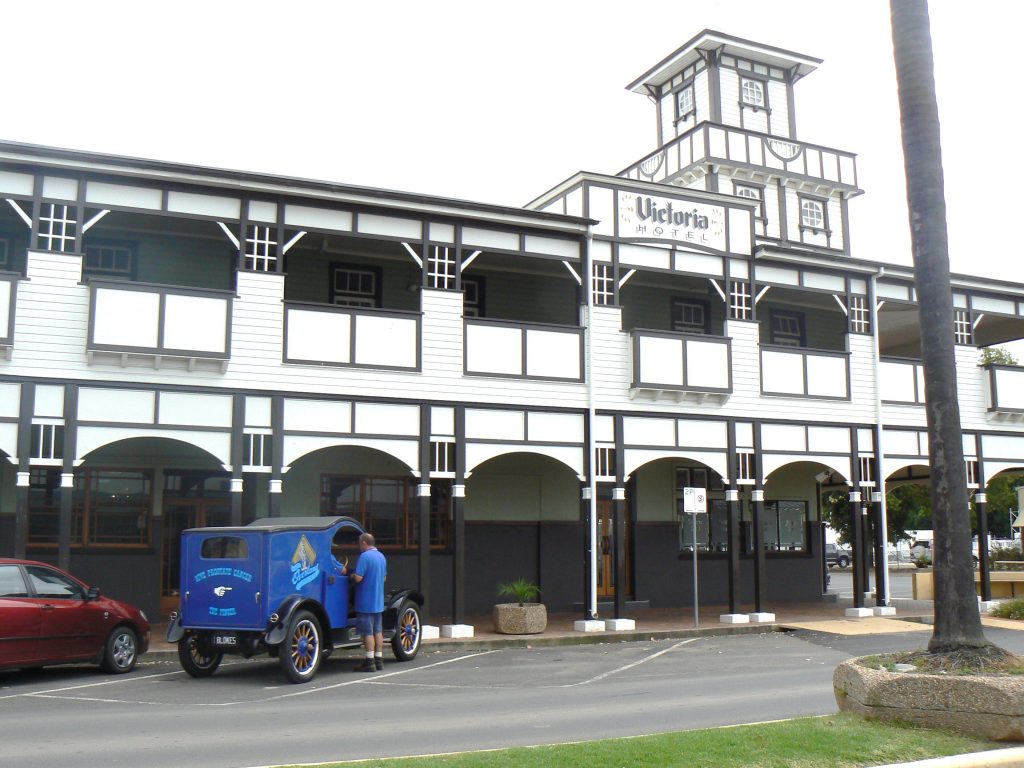
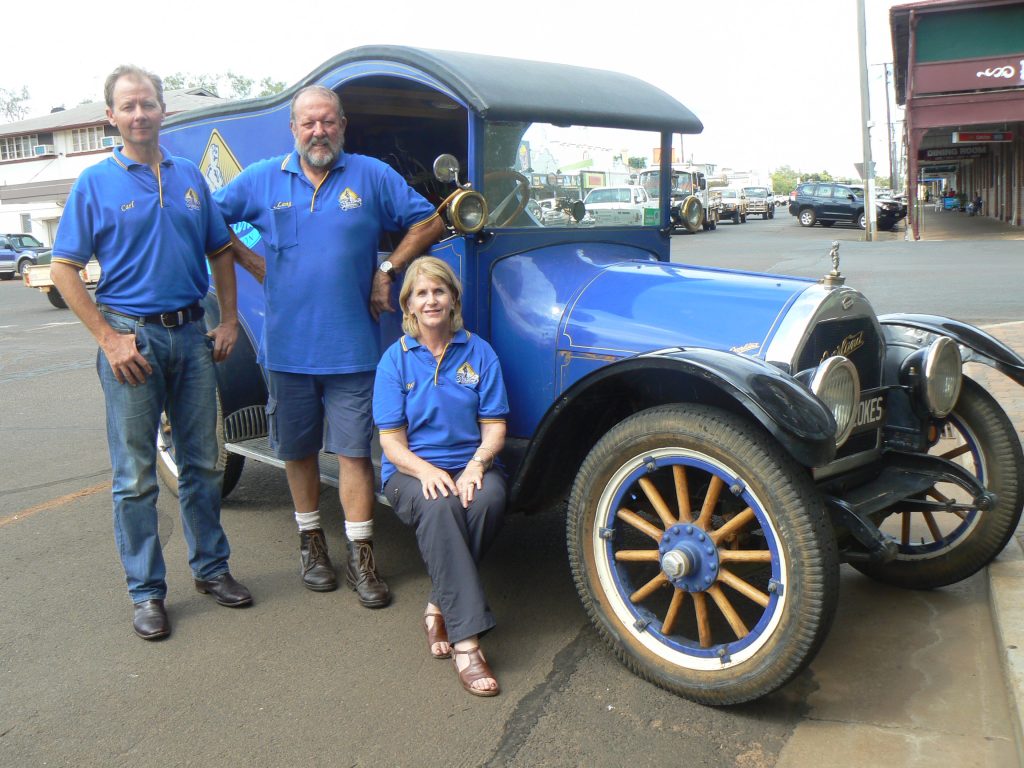
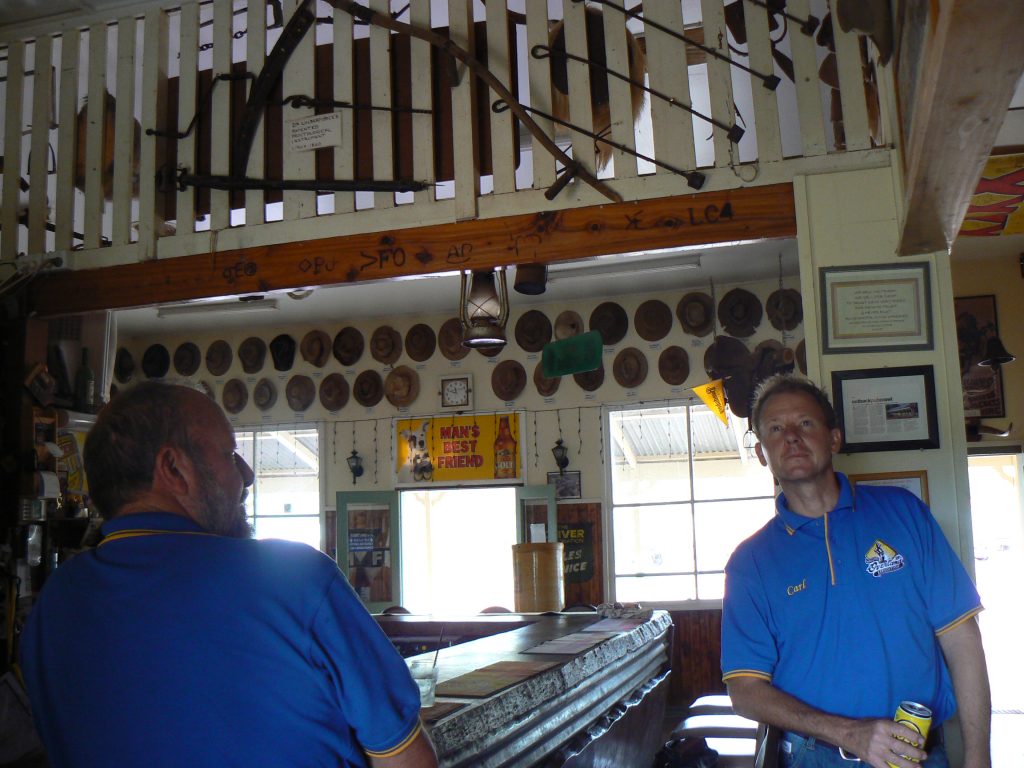
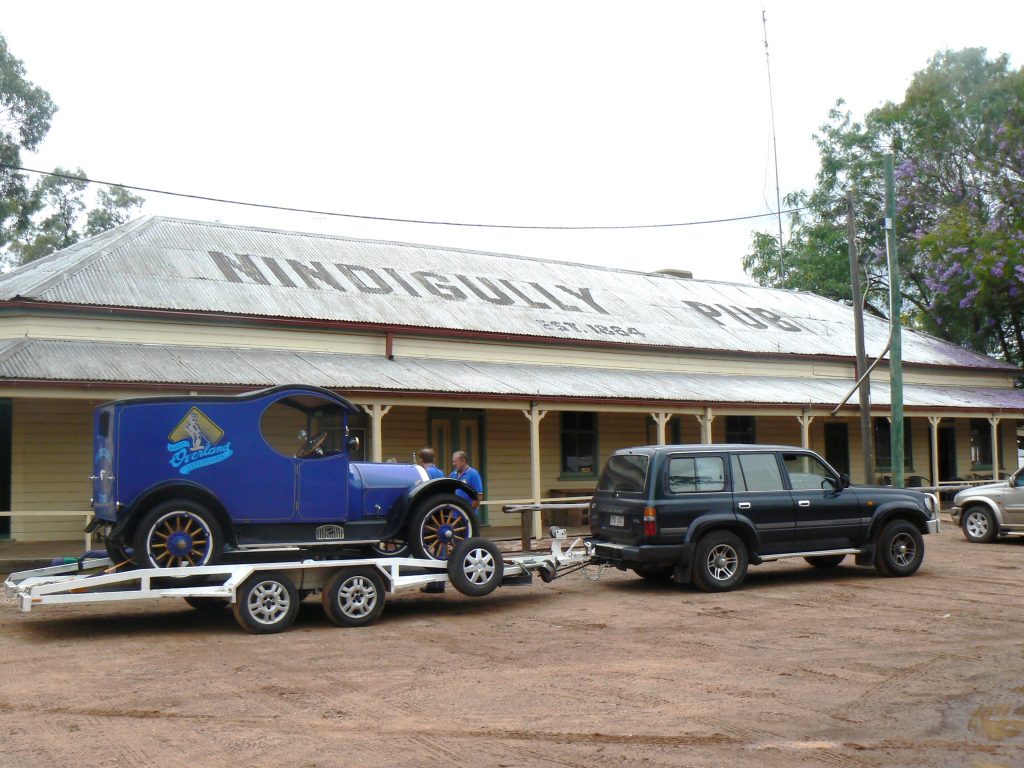
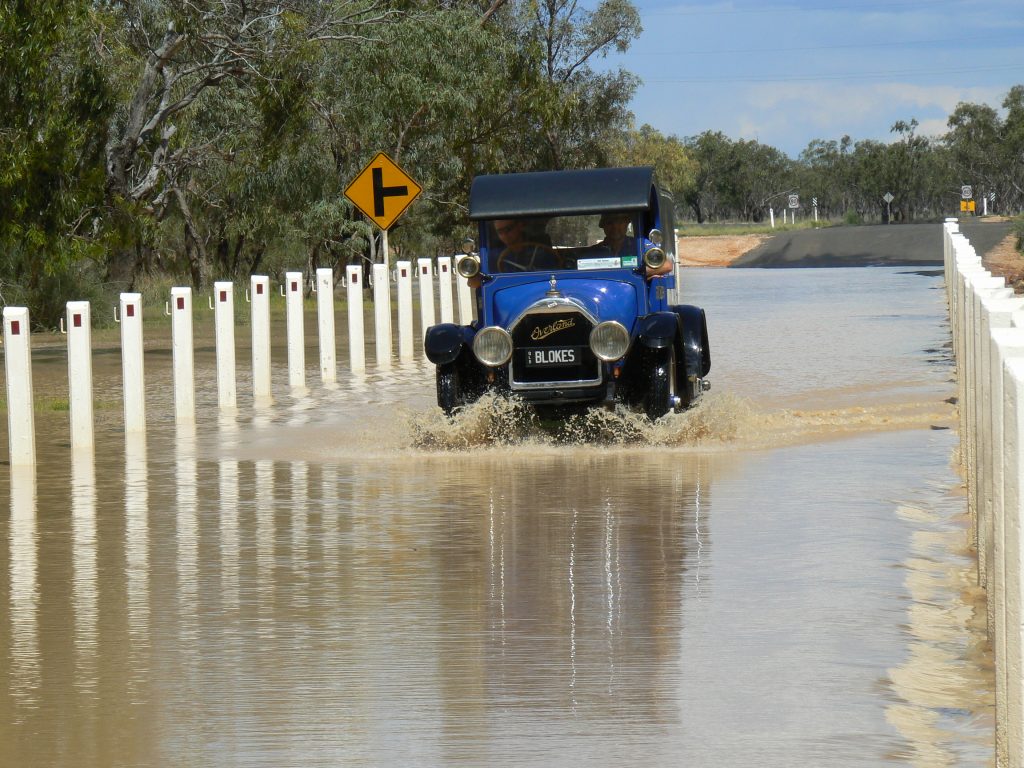
We left on the 14th November from Wamuran with the send off organized by local radio station FM101.5 and headed west through Goondiwindi, St George, Cunnamulla, Thargomindah, Quilpie, Windorah, to Birdsville. We then turned north through Boulia, Mt Isa, Cloncurry, to our most northerly point at Normanton.
We then headed through Croydon, Undara, Charters towers, Hughenden, Winton, Longreach, Barcaldine, Blackall, to Charleville and then headed back east through Roma, Dalby and arrived 9th December back in Brisbane,
In Brisbane we finished the trip at the hand sculpture (the big silver finger) in Eagle Street with a warm welcome from the CEO of the Prostate Cancer Foundation, family and friends.
The Overland certainly did it’s job of attracting interested onlookers everywhere we went, giving Lang and Carl a good opportunity to practice their – Blokes talking to Blokes about men’s health and prostate cancer which was the expedition objective. We had to get men thinking about early warning and prevention being better than dying at worst or extensive treatment at best. My role was to talk to the women whose influence is very strong in getting their men to have a check-up.
The whole trip was a huge success with us making contact with thousands of men and convincing them to have a medical check, sometimes the first in their lives. We have no doubt we will save at least some lives and make many others more pleasant through the discovery of prostate cancer, diabetes 2, high blood pressure and numerous other ailments at an early, treatable stage.
Bev Kidby


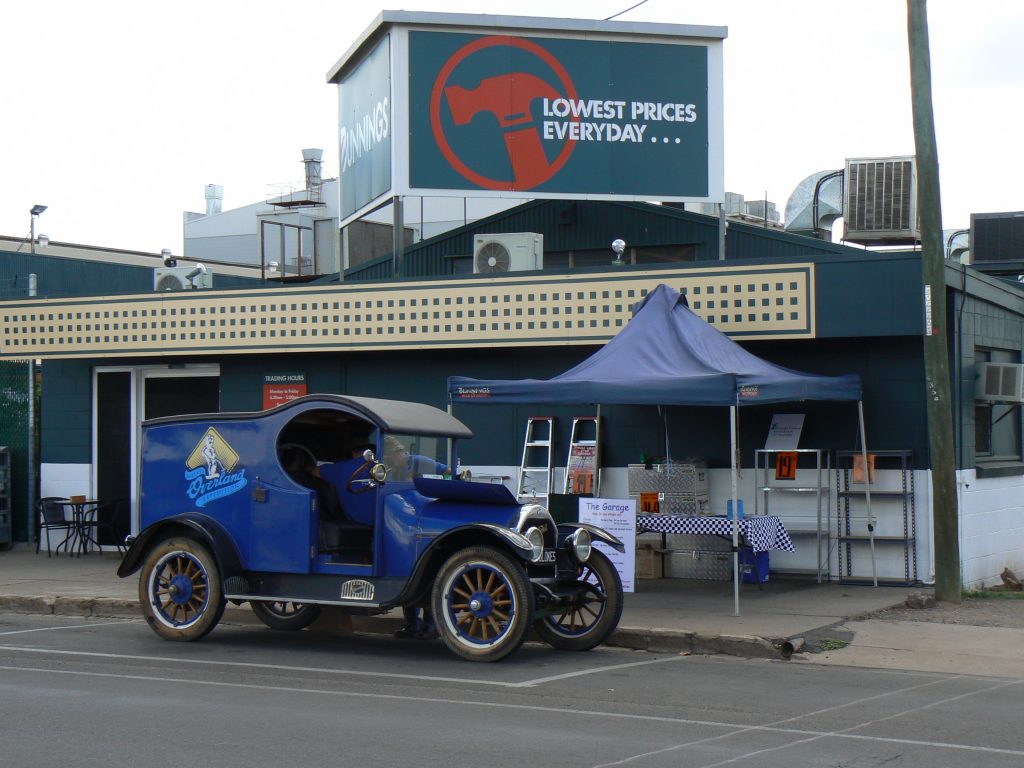
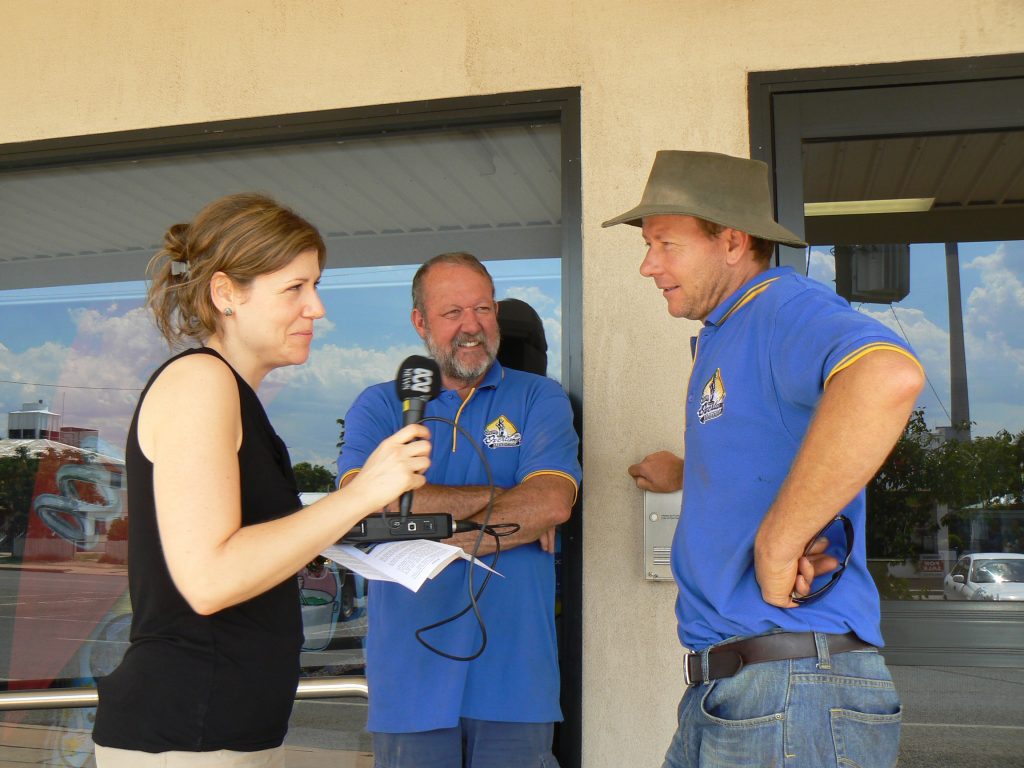
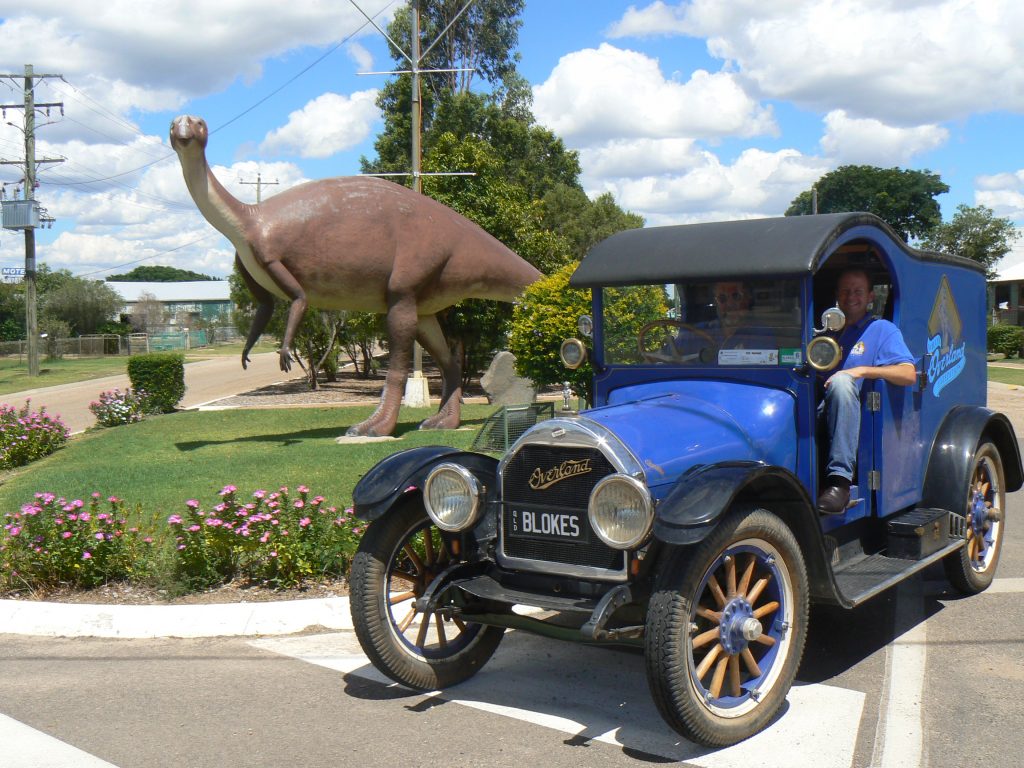
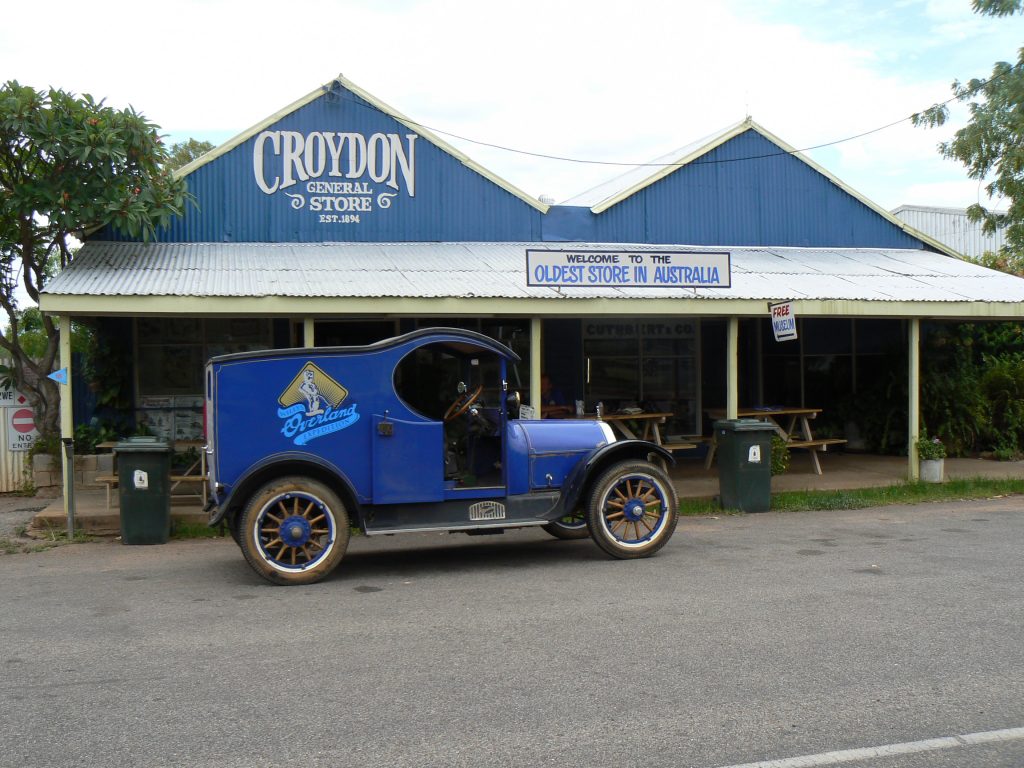
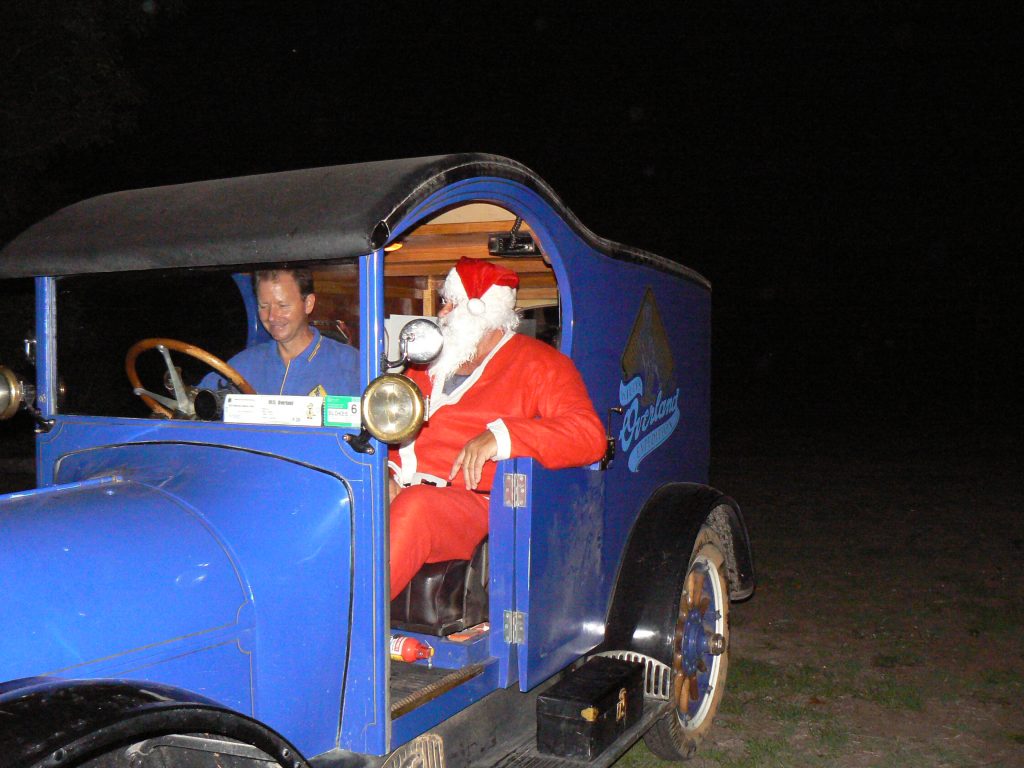
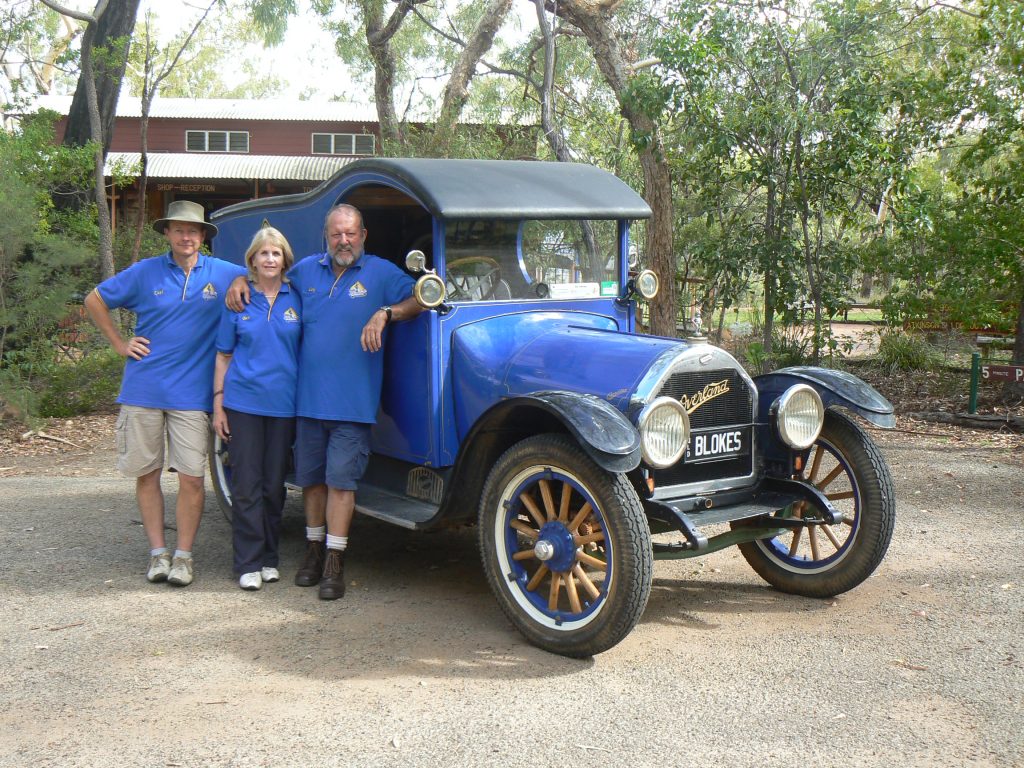
Willys Overland
In 1915 Willys Overland was the largest car manufacturer in the world after Ford. They produced 650,000 cars that year, many of which were sent to Australia.
The history of our car is obscure for 90 years other than it resided in Queensland all its working life. Purchased from a Melbourne enthusiast in 2009 where it had sat untouched in his shed for 30 years after being bought from Brisbane in the 70’s, the car was returned by Lang Kidby to Queensland to be restored for the International Veteran Rally in Tasmania in 2010.
The Willys Overland created the catalyst to commence a full-time restoration in late 2009. While removing the old body a brass plate was discovered jammed in the chassis which said “Supplied by Eagers, Newstead, Brisbane.” A.P. Eagers, now Australia’s largest publicly listed motor dealer group, was the Willys Overland distributor from 1913. They even had their own body factory in Newstead, Brisbane (where they are still based) no doubt building the body on our car before delivery. Most vehicles of this era arrived in Australia mechanically complete but had bodies built by the local distributors or big companies like Holden or Richards. We decided to build the very incomplete body as a delivery van of a style copied from photos from the Queensland State Library giving us a clear design of similar vehicles operating in Queensland during that period.
TheModel 80 Willys Overland is a very big car, far larger, stronger and more powerful than the excellent Model T Ford of the era. It has a 40 horsepower, 4 cylinder engine and a revolutionary transaxle design with the gearbox attached to the rear axle – a feature still found on high performance vehicles such as Porsche and Alfa Romeo. An amazing feature for 1915 is that it was one of the very few cars to have electric start.
Early tests indicated the Overland was a very fast, comfortable and quiet car to drive. The extra long wheel-base, large soft spings and huge 24 inch wheels ensured it handled well on the 3,000 kilometres of unmade road and track covered on the Australian journey.
Manneken Pis (The Flemish/Dutch spelling)
This famous statue in Brussels, Belgium of a small boy peeing was adapted as the Willys Overland Expedition mascot and logo. Apart from Willy’s urinary implications for prostate cancer and men’s health and the attention our silver radiator cap mascot brought, we selected one of the many stories about his creation as our official version.
Around the 17th century Brussels was undergoing a prolonged siege. The enemy had managed to stack a large amount of gunpowder against the city walls in preparation for a breaching explosion. Lighting the fuse, they retreated to a safe distance just as a small boy happened along. Seeing the burning fuse he immediately peed on it while raising the alarm. His prompt action saved the city.
Our aim was to convince men to emulate Willy, to discover and pee on the burning fuse of prostate cancer and other hidden threats.
Lang Kidby
